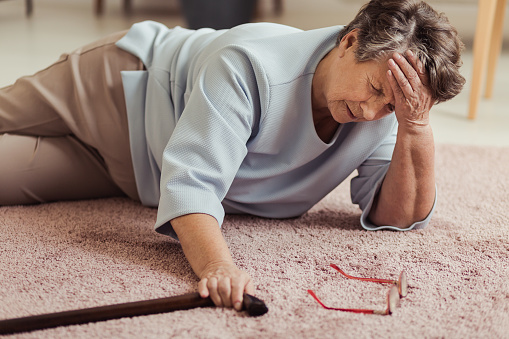Falls are killing the elderly at higher rates, but dying as a result of falling down doesn’t have to be inevitable.
Incorporating exercise can help senior citizens stay limber and keep balance in dealing with elderly injuries from falls, according to a New York Times story.
The story discussed a study published June 4, 2019 in the medical journal JAMA. The study said deaths from falls among U.S. adults 75 and older jumped to 25,189 in 2016 from 8,613 in 2000, an increase of 16,576.
Statistics On Elderly Falls
Information for the study about elderly injuries from falls came from the U.S. National Vital Statistics System.
Frequent injuries from falls suffered by elderly people include broken bones in hips, wrists, arms and ankles, head trauma, and a fear of falling again, which can make a person less active and weaker, according to the U.S. Centers for Disease Control and Prevention (CDC).
Elizabeth Burns, a CDC health scientist, who was an author of the study, said the reason for the increase in deaths from falls of people 75 and older was unclear.
But a likely reason is that people are living longer with conditions that in the past might have killed them, she said.
Also, Burns said: older adults are on medications that can increase the risk of falling; women are slightly more likely to fall than men; but men are slightly more likely to die as a result of a fall.
The good news is that easy steps are available for people 75 and older to avoid falls.
Physicians emphasize the importance of senior citizens making exercise part of their routines, recommending 20 minutes a day of physical activity.
Doctors recommend combining aerobic exercises, such as running or walking long distances, with anaerobic exercises, such as lifting weights, particularly to strengthen the legs.
A good way to improve balance is to practice Tai Chi, the Chinese martial art. This involves very slow, purposeful movements in coordination with breathing and muscle activity.
Tai Chi trains the body to remain stable when put in an off-kilter position, said Dr. Elizabeth Eckstrom, a geriatrician at Oregon Health & Science University.
The CDC offers an online “Compendium of Effective Fall Interventions: What Works for Community-Dwelling Older Adults.” One exercise program consisted of two structured high-intensity group classes and two home exercise sessions per week, over 18 months. The program resulted in participants being 46 percent less likely to fall and 67 percent less likely to suffer a fall-related injury compared with those who did not receive the intervention.
Adjusting or changing medications are other ways that can help reduce elderly injuries from falls. Many medications, especially those intended to help with sleep, can affect a person’s balance.
Antihistamines like Benadryl and Advil PM also can hinder balance. Eckstrom recommended melatonin as an alternative sleep aid.
Other ways to help in avoiding elderly injuries from falls include:
- When walking outside, avoid wearing bifocals because such eyeglasses can change depth perception in the act of stepping off a curb, for example. Wear glasses with single-focus lens for walking outside.
- Footwear: avoid high heels, slide-in sandals and slippers when walking outside. Wear shoes that have a back and a sole with good tread.
- Canes and walkers can help avoid elderly injuries from falls among senior citizens and such tools are ways for folks to stay independent.
Contact Braswell Murphy Injury Lawyers today for help with cases of elderly injuries from falls, as well as for help with cases of abuse and neglect at nursing homes and assisted living facilities.


